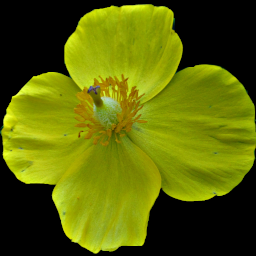We must admit that we have no idea what this plant is doing here. We had first identified this as Trillium sessile, but Mr. Scott Namestnik pointed out in a comment that this plant clearly seems to be T. recurvatum. But how did it get here in Bird Park, Mount Lebanon, merrily blooming in mid-May as if it were perfectly at home? Neither Gray nor the USDA PLANTS database places any wild populations of Trillium recurvatum anywhere in the Pittsburgh metropolitan area, or even within two hundred miles. It is a prairie-state plant, almost unknown in Ohio, and not common till Indiana, although (oddly) there is apparently an isolated wild population way over in Lancaster County, Pennsylvania. Is someone attempting to populate Bird Park with unusual wildflowers? Or have we discovered something previously unknown in the botanical literature—another isolated wild population, like the one in Lancaster County?
Gray describes the genus and the species:
TRÍLLIUM L. WAKE ROBIN. BIRTHROOT. Sepals 3, lanceolate, spreading, herbaceous, persistent. Petals 3, larger, withering in age. Stamens б; anthers linear, on short filaments, adnate. Styles awl-shaped or slender, spreading or recurved above, persistent, etig matic down the inner side. Seeds ovate, horizontal, several in each cell. — Low perennial herbs, with a stout and simple stem rising from a short and praemorse tuber-like rootstock, bearing at the summit a whorl of 3 ample, commonly broadly ovate, more or less ribbed but netted-veined leaves, and a terminal large flower; in spring. (Name from tres, three; all the parts being in threes.) — Monstrosities are not rare with the calyx and sometimes petals changed to leaves, or the parts of the flower increased in number.
Ovary and fruit 6-angled and more or less winged.
Flower sessile; leaves usually mottled.
T. recurvàtum Beck. Leaves contracted at the base into a petiole, ovate, oblong, or obovate; sepals reflexed; petals pointed, the base narrowed into a claw, oblong-lanceolate to -ovate, dark purple; fruit ovoid, strongly winged above, 1.8 cm. long. — Rich woods, O. to Minn., Ark., “Miss.,” and Tenn.







